January 2nd 2016 And The Winter Garden Is In! 
This is the first winter garden with the redesigned beds! So far it is working out better than expected. Paul can get to everything so easy now and weeds to not have a chance!

Working In This Years Mulch

70 cubic feet later, the garden looked and felt great!

With a smile on his face
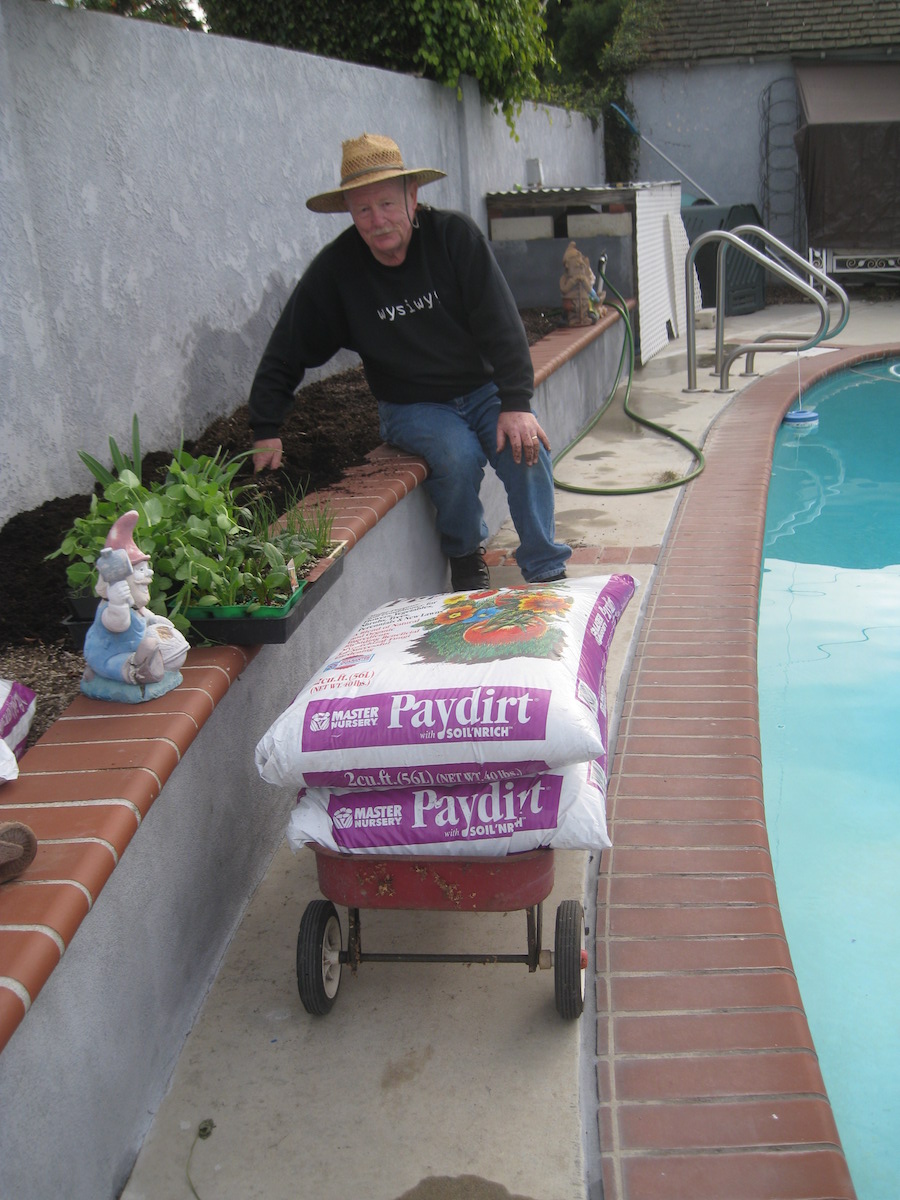
Paul dug in 25 bags (60 cubic feet) of mulch into the planters!


What Is Growing?

We had a bit of rain last night so everything was beautiful

The Bok Choy is looking so good!
Did You Know? -
Chinese cabbage was ranked second for nutrient density out of 41 "powerhouse" fruits and vegetables in a peer-reviewed US Center for Disease Control study.
Bok choy is ready to harvest as soon as it has usable leaves. The small varieties are mature at 6 inches tall and the larger types grow 2 feet tall. The baby varieties are ready in about 30 days and the larger ones are ready four to six weeks after sowing.
Bok choy is a cabbage that forms no head. As such, you can cut a few leaves at a time or harvest the entire crop.

Ain't it the truth!
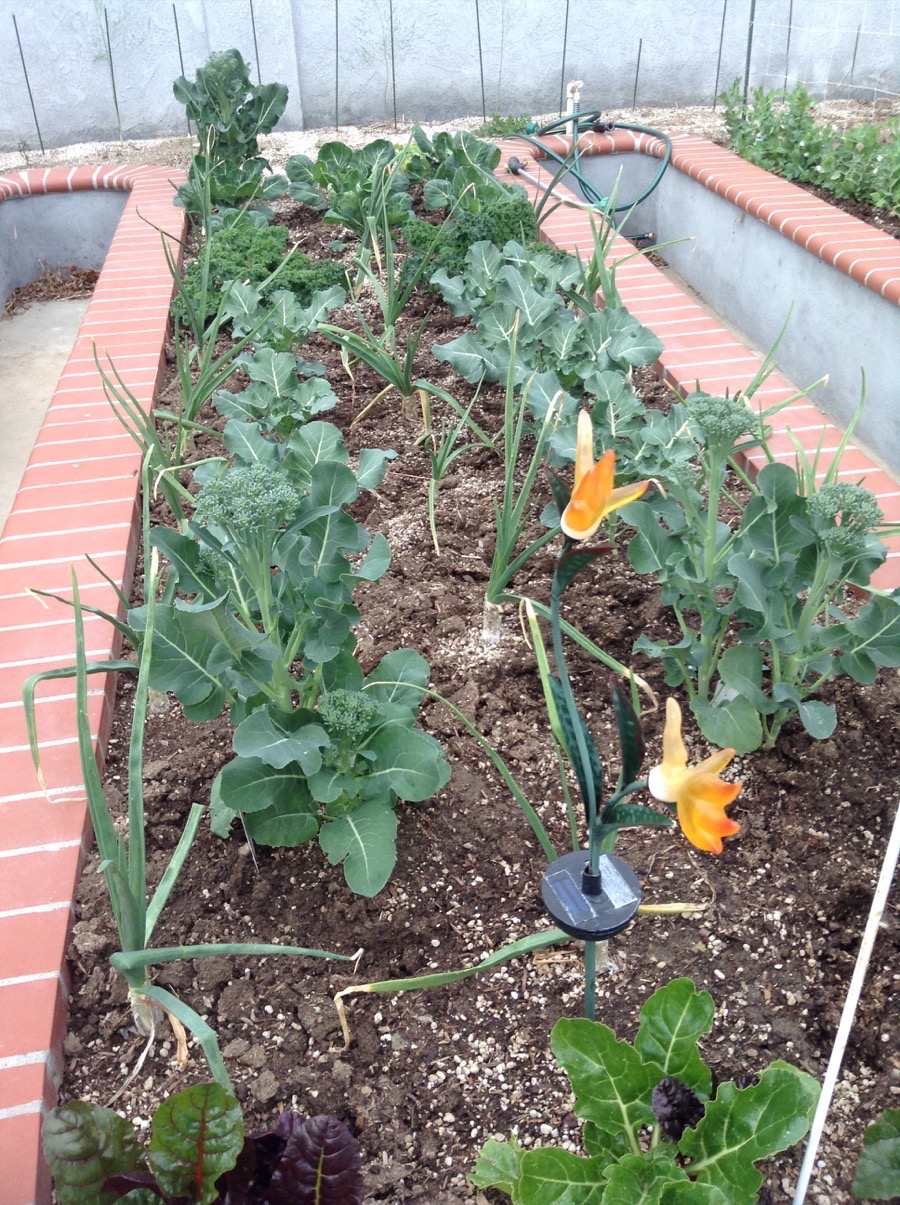
Looking good! This garden has 800 pounds of perlite in it!
Did You Know? - In horticulture, perlite can be used as a soil amendment or alone as a medium for hydroponics or for starting cuttings. When used as an amendment it has high permeability / low water retention and helps prevent soil compaction.

I see salad in our future

The peas are on their way!
Did You Know? - The pea is most commonly the small spherical seed or the seed-pod of the pod fruit Pisum sativum. Each pod contains several peas. Pea pods are botanically fruit, since they contain seeds and developed from the ovary of a (pea) flower.
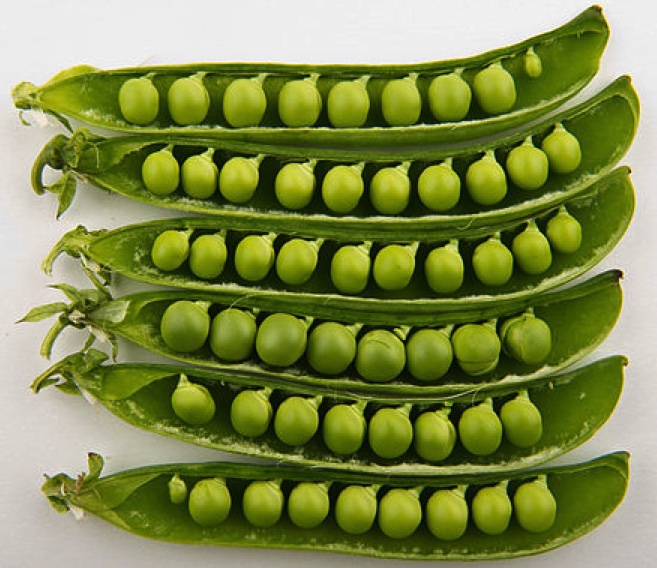

Just wait another 60 days!
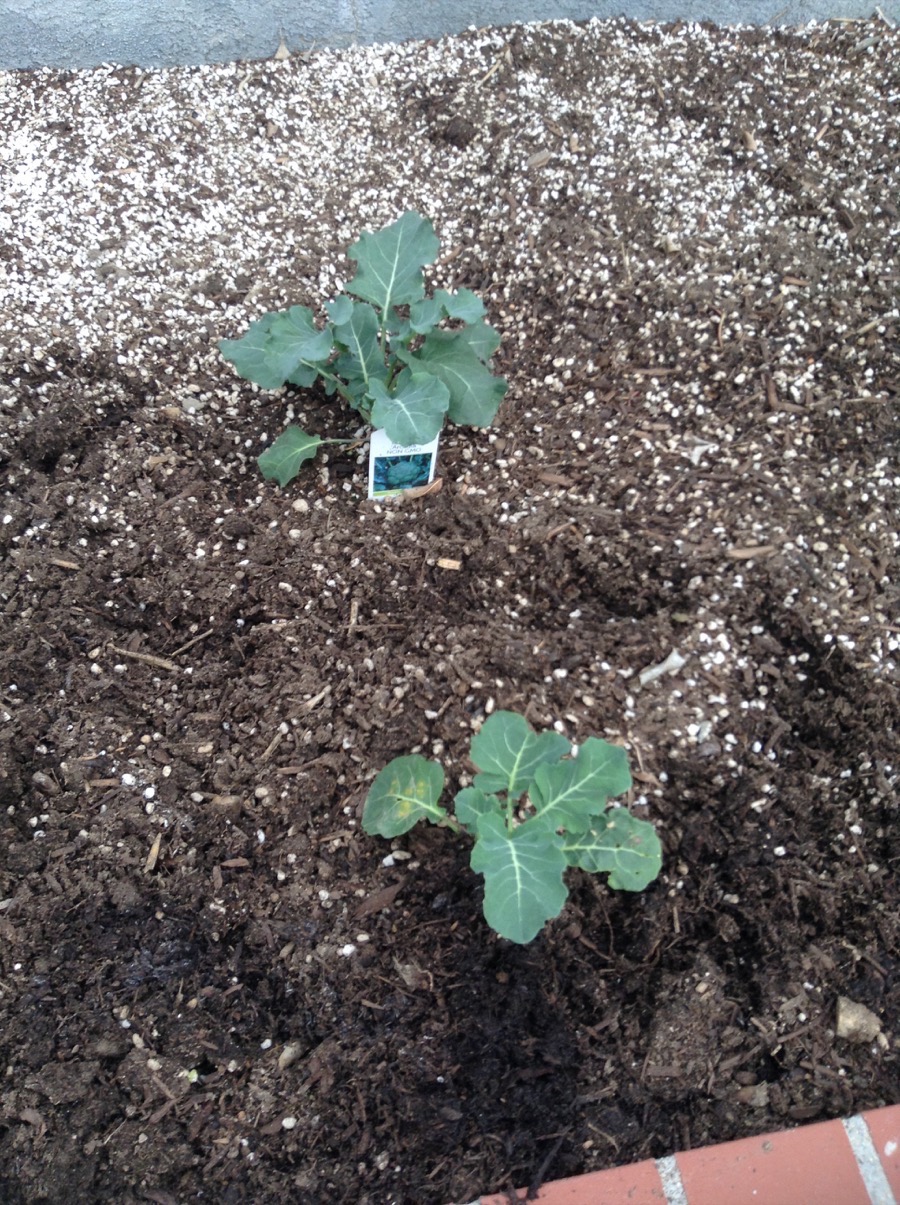
Broccoli is on the way!

Cabbage in work!

Swiss Chard
Did You Know? - Chard is also known by its many common names such as Swiss chard, silverbeet, perpetual spinach, spinach beet, crab beet, bright lights, seakale beet, and mangold. In South Africa, it is simply called spinach
Chard can be harvested while the leaves are young and tender, or after maturity when they are larger and have slightly tougher stems. Harvesting is a continuous process, as most species of chard produce three or more crops. .

Broccolini is ready to harvest
Did You Know? - Broccolini is a green vegetable similar to broccoli but with smaller florets and longer, thin stalks. Often misidentified as young broccoli, it is a hybrid of broccoli and kai-lan, both cultivar groups of Brassica oleracea. It was originally developed by the Sakata Seed Company of Yokohama, Japan, in 1993 as "aspabroc".
The entire vegetable is consumable, including the occasional yellow flower.

Looks so healthy!

Yummy with a capital "Yum"

We could have planted more but this will do!

February In The Garden
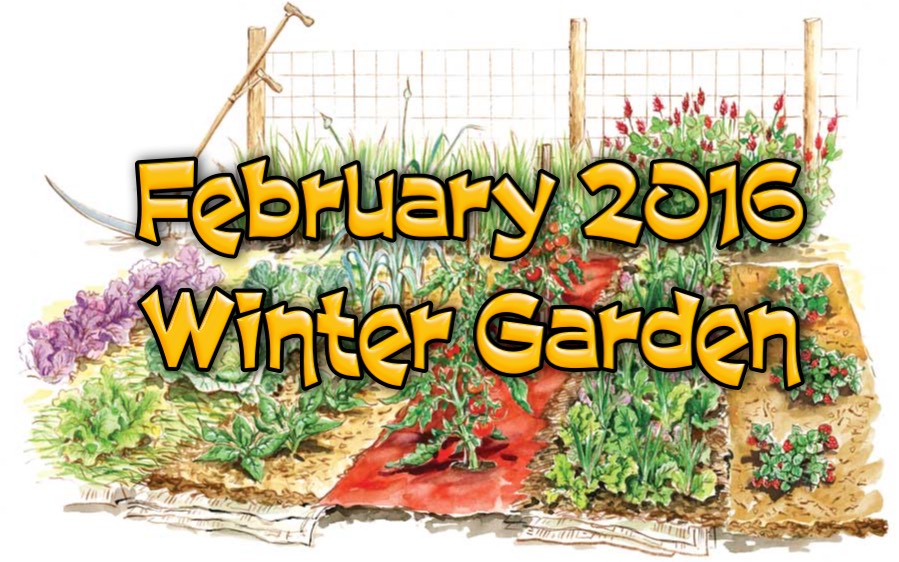
Did You Know? - Historical names for February include the Old English terms Solmonath (mud month) and Kale-monath (named for cabbage) as well as Charlemagne's designation Hornung. In Finnish, the month is called helmikuu, meaning "month of the pearl"; when snow melts on tree branches, it forms droplets, and as these freeze again, they are like pearls of ice. In Polish and Ukrainian, respectively, the month is called luty or лютий, meaning the month of ice or hard frost. In Macedonian the month is sechko (сечко), meaning month of cutting [wood]. In Czech, it is called únor, meaning month of submerging [of river ice].
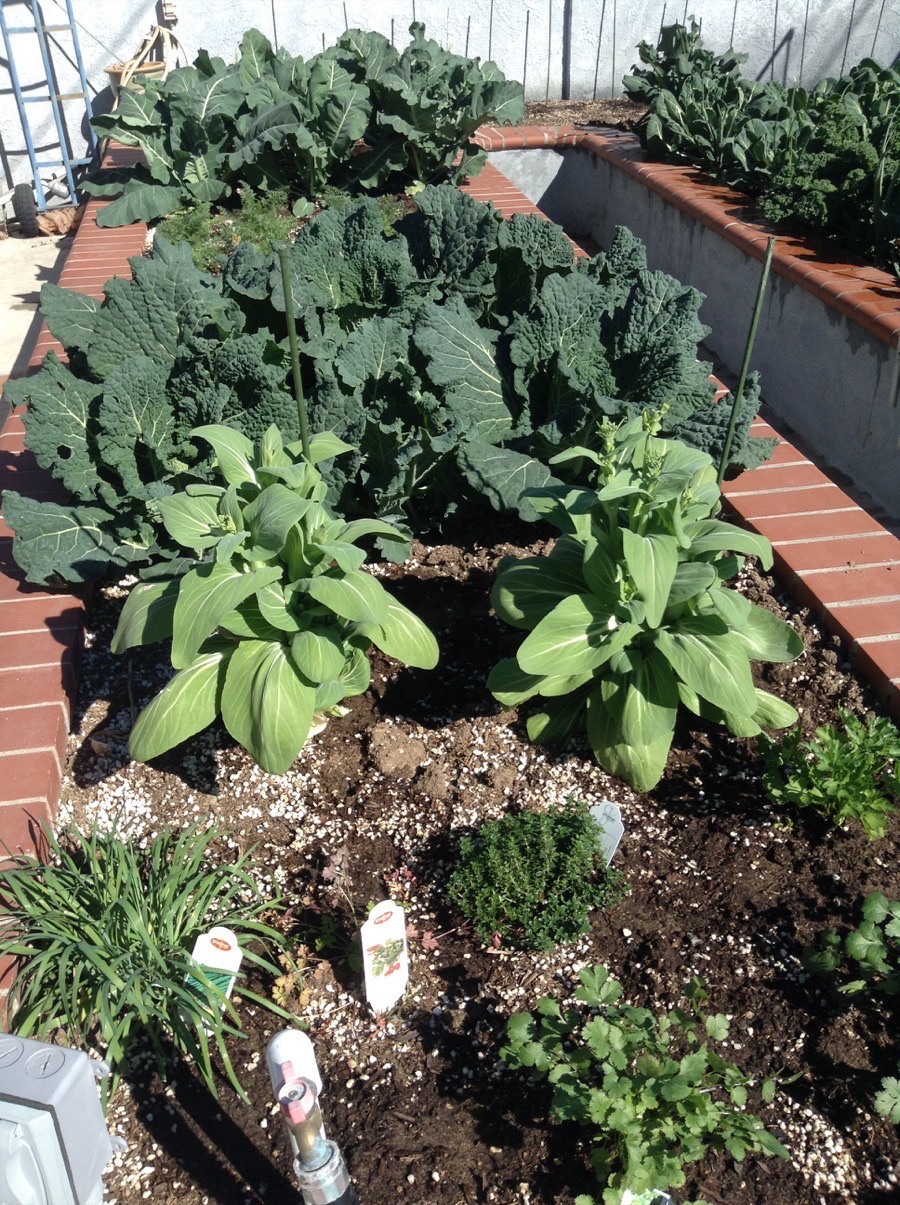
Herbs, bok choy, leafy kale, carrots/beets, and cauliflower

The broccoli
looks fantastic!
We see broccoli cheese soup in our future!

The head will double in size and then get picked!


Carrots on the top and beets on the bottom

These leaves of kale will soon be chips!

Strawberries at the bottom and we are already harvesting the lettuce for instant salads!
Come On Peas

The shelling peas are taking off.... A few are ready!
Did You Know? - Fresh peas are often eaten boiled and flavored with butter and/or spearmint as a side dish vegetable. Salt and pepper are also commonly added to peas when served. Fresh peas are also used in pot pies, salads and casseroles. Pod peas (particularly sweet cultivars called mange tout and "sugar peas", or the flatter "snow peas," called hé lán dòu, 荷兰豆 in Chinese) are used in stir-fried dishes, particularly those in American Chinese cuisine.

Two rows of peas.... We both love fresh peas!

Look carefully and you will see blue berry blossoms!
February 13th

It was a froggy morning!

The blue berries are looking good!

The Broccolini regenerates about 5-7 days after harvesting!
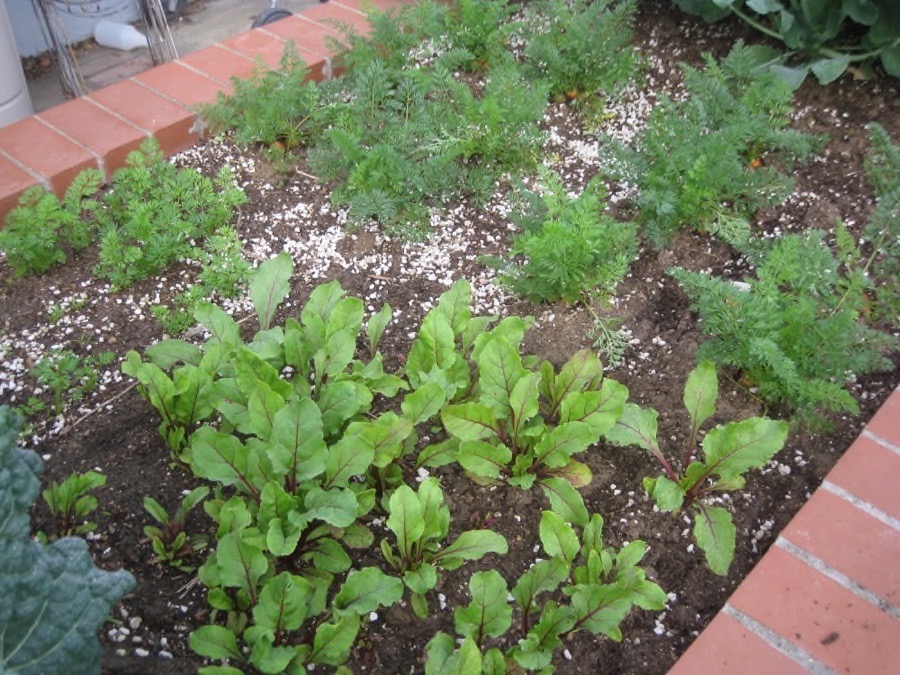
Beets and carrots... The beet tops can be used in salads!

YES! We gots tomatoes.... We planted three to see what will happen
Look carefully behind the tomatoes and you will see asparagus coming up!
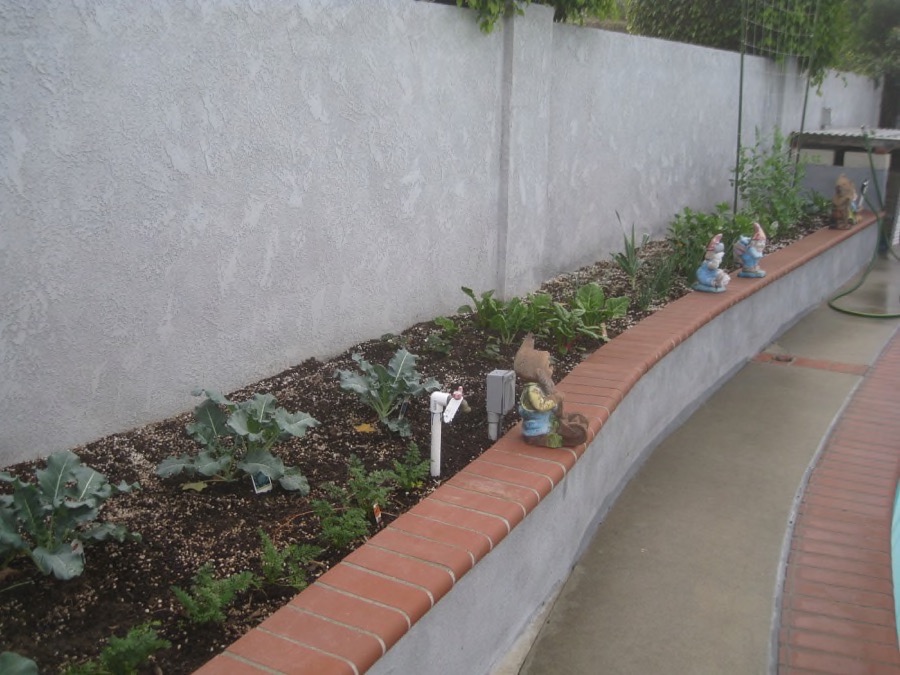
The back wall is looking pretty good!
Love Those Peas

Pea blossoms are beautiful!

The peas are reaching for the sky!

We have cauliflower!

He is playing hide and seek!

Sue and Paul plus Vicky and Del take our salad leaves form these six plants!

Broccolini is amazing... We re pick it once a week!
It is so good you can just eat is raw form the plant!
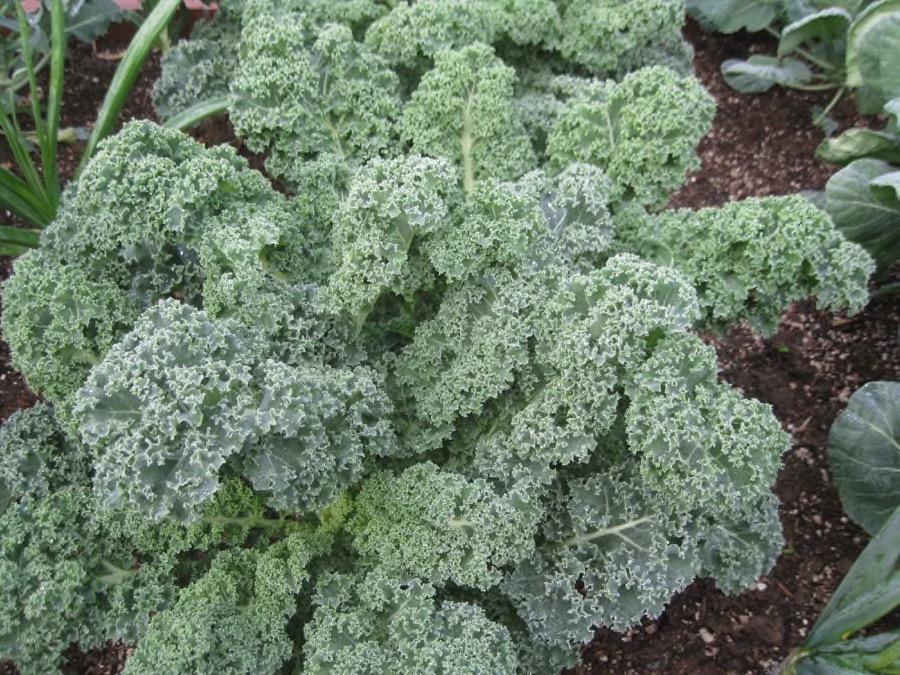
Soon to be chips!
Try This...
One bunch of Kale
1 tablespoon extra-virgin olive oil, divided
1 tablespoon
sherry vinegar
Pinch of salt
Preheat an oven to 300 degrees F (150 degrees C).
Cut away inner ribs from each kale leaf and discard; tear the leaves into pieces of uniform size. (I made my pieces about the size of a small potato chip.) Wash torn kale pieces and spin dry in a salad spinner or dry with paper towels until they're very dry.
Put the kale pieces into a large resealable bag (or use a bowl if you don't mind getting your hands oily). Add about half the olive oil; seal and squeeze the bag so the oil gets distributed evenly on the kale pieces.
Add the recontenting oil and squeeze the bag more, until all kale pieces are evenly coated with oil and slightly 'massaged.' Sprinkle the vinegar over the kale leaves, reseal the bag, and shake to spread the vinegar evenly over the leaves. Spread the leaves evenly onto a baking sheet.
Roast in the preheated oven until mostly crisp, about 35 minutes. Season with salt and serve immediately.

These barrels will supply us with almost four months worth of blue berries
Did You Know?
1. Blueberries protect against memory loss. - A 2012 study suggested that eating at least one serving of blueberries a week slowed cognitive decline by several years. One possible explanation as to why came from a 2013 study in mice, which found that berries might protect the brain by clearing toxic proteins that accumulate there.
2. Maine produces more blueberries than anywhere else in the world.
blueberry bush
- At least, according to the University of Maine.
3. They can be used as a natural food dye. - And legend has it that early American colonists boiled them with milk to make gray paint, according to the Produce for Better Health Foundation's Fruits & Veggies More Matters campaign.
4. The perfect blueberry should be "dusty" in color.
blueberries dusty
5. But don't wash off that "dust" until you're ready to dig in. - A rinse softens your blueberries, which can quicken spoiling, according to the University of Texas MD Anderson Cancer Center.
6. The blueberry bush is a relative of the rhododendron -- and the azalea.
rhododendron
- And along more intuitive lines, also the cranberry.
7. Many blueberry-flavored processed foods do not contain any real blueberries. - Products like bagels, cereals, breads and muffins from brands like Kellogg's, Betty Crocker and General Mills were reported to use combos of sugar, corn syrup, starch, oil and artificial flavors and dyes to create their own mock blueberries, according to a 2011 Consumer Wellness Center investigation, the LA Times reported.